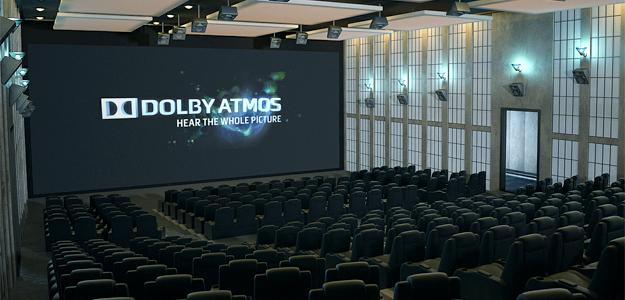 Twentieth Century Fox’s Taken 2 — a sequel to the 2008 film featuring actor Liam Neeson relentlessly busting heads — will soon be blasting up to 128 channels of sound through up to 64 individual speakers at a Dolby Atmos theater probably-not-so-near-you. If you missed the opportunity to hear Dolby Atmos in action while Pixar’s Brave was in theaters, then your shot at checking out the latest surround sound format starts this Friday, October 5, provided you live close enough to an Atmos-equipped theater or are willing to take a bit of a trip.
Twentieth Century Fox’s Taken 2 — a sequel to the 2008 film featuring actor Liam Neeson relentlessly busting heads — will soon be blasting up to 128 channels of sound through up to 64 individual speakers at a Dolby Atmos theater probably-not-so-near-you. If you missed the opportunity to hear Dolby Atmos in action while Pixar’s Brave was in theaters, then your shot at checking out the latest surround sound format starts this Friday, October 5, provided you live close enough to an Atmos-equipped theater or are willing to take a bit of a trip.
We checked out Dolby’s Atmos surround system the same day Brave hit theaters and, due to technical difficulties, had to return the following week to 
Yet, we couldn’t help but feel like the freshman effort was just the tip of the sonic iceberg — something in our gut told us that more can be done with such an advanced system. Let’s hope Chuck Michael, the engineer in charge of re-mixing the flick in the Dolby Atmos format, took things to the next level for this release. As Michael explains in this video, the film had already been mixed in 5.1 before he got to it. The challenge, then, was to enhance the original surround mix using the much more flexible Atmos system, without entirely reworking the soundtrack.
The next film to hit theaters armed with Atmos surround technology will be Chasing Mavericks, another Fox picture, which details the story of real-life surfing legend Jay Moriarity, known for taking on the huge waves at the famed Mavericks at Half Moon Bay in Northern California. In fact, it’s a good bet that Fox will likely be pushing more Atmos releases in the near future, since, as evidenced in the aforementioned video, it has installed an Atmos system at its Zanuck post-production theater.
While that gives us hope for more Atmos content in the not-t0o-distant future, it appears Dolby still has an uphill battle to wage in order to get more theater rooms retrofitted with its latest surround technology. In the present economy, it is understandable that theater owners would be reluctant to make the big investment needed to add all those extra speakers retroactively and integrate new Atmos processors.
When Brave debuted, 13 US and one Canadian theater were showing the film in Atmos. By contrast, Taken 2 will be shown in just 12 Atmos-equipped theaters in the US (listed below), with one in Canada and two in China. There are several new theater names on the list, meaning a handful of theaters that hosted Brave in Atmos will not be hosting Taken 2. We reached out to Dolby and were told by a representative: “Dolby is still in the testing phase of Dolby Atmos. As we expand on the Dolby Atmos enabled locations we’ve been testing our system in new markets. This requires us to bring the Dolby Atmos system to new cities, outfit new theatres and train staff. Dolby will look to reactivate the other locations again in the future.”
This raises the question: Why would a theater need to be “reactivated”? We’ll update this story as soon as we hear back. For now, we’ll just have to bide our time as Atmos slowly spreads across the US.
You can see Taken 2 at the following Dolby Atmos theaters:
- AMC Aventura 24 (Aventura, FL)
- AMC Barrywoods 24 (Kansas City, MO)
- AMC Downtown Disney 24 (Lake Buena Vista, FL)
- AMC Empire 25 (New York, NY)
- AMC Metreon 16 (San Francisco, CA)
- AMC Ontario Mills 30 (Ontario, CA)
- ArcLight Sherman Oaks (Sherman Oaks, CA)
- Brenden Theatres at the Palms (Las Vegas, NV)
- Cinemark Century at Pacific Commons (Fremont, CA)
- Cinemark West Plano and XD (Plano, TX)
- Cinetopia Vancouver Mall 23 (Vancouver, WA)
- ShowPlace ICON at Roosevelt Collection (Chicago, IL)
Editors' Recommendations
- You Asked: Dolby Atmos and EDID, minimalist soundbars, and HDMI 2.1
- McIntosh’s new $8,000 AVR: gigantic power, with a Dolby Atmos catch
- 20 of the best Dolby Atmos movies to watch in your home theater
- You won’t need 17 speakers to appreciate Dolby Atmos in Apple Music
- Disney+ has a Dolby Atmos problem. Here’s what you need to know




